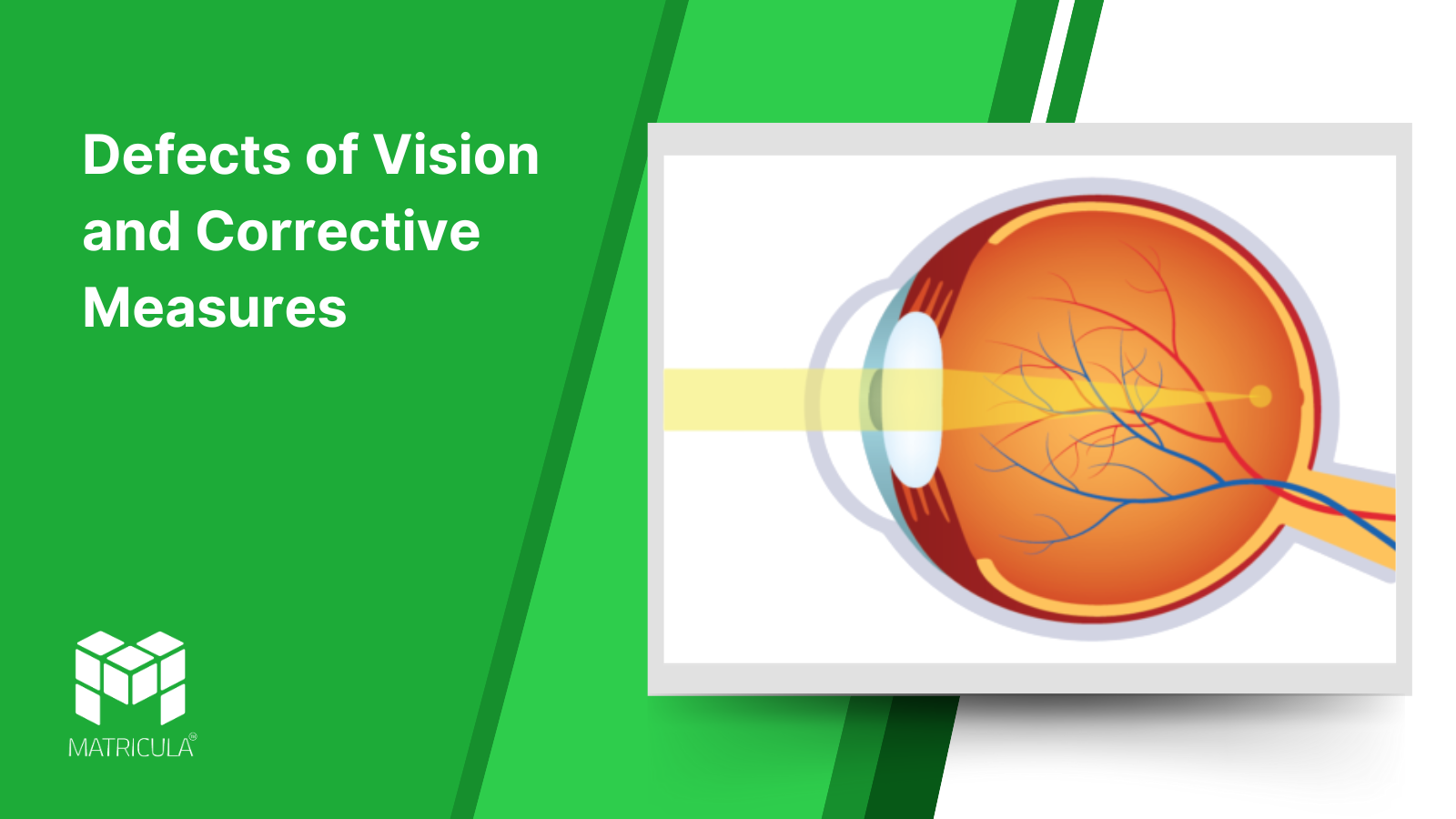Defects of Vision and Corrective Measures
Introduction
The human eye is a complex organ that enables us to perceive the world around us. However, due to various reasons, such as aging, genetic factors, or structural abnormalities, certain vision defects can arise. These include myopia (nearsightedness), hypermetropia (farsightedness), presbyopia, and cataract. Understanding these conditions, their causes, and their corrective measures is crucial in maintaining healthy eyesight.
1. Myopia (Nearsightedness)
Definition
Myopia is a common refractive error where a person can see nearby objects clearly, but distant objects appear blurred.
Causes
- Elongation of the eyeball
- Excessive curvature of the cornea or lens
- Genetic predisposition
- Prolonged screen exposure or reading in dim light
Corrective Measures
- Concave (Diverging) Lenses: A concave lens is used in spectacles to diverge incoming light rays, ensuring that the image forms correctly on the retina.
- Laser Surgery (LASIK): A medical procedure that reshapes the cornea to correct the focus.
- Orthokeratology (Ortho-K): The use of special contact lenses to reshape the cornea overnight.
2. Hypermetropia (Farsightedness) / Hyperopia
Definition
Hypermetropia is a condition where distant objects appear clear, but nearby objects are blurry.
Causes
- Shortening of the eyeball
- Flattened cornea or lens
- Weakening of ciliary muscles with age
Corrective Measures
- Convex (Converging) Lenses: A convex lens in spectacles helps focus light rays correctly on the retina.
- Contact Lenses: Prescribed convex contact lenses can also correct hypermetropia.
- Refractive Surgery: Laser treatments like LASIK can reshape the cornea for better focus.
3. Presbyopia
Definition
Presbyopia is an age-related vision defect where both near and distant objects become difficult to focus on due to reduced flexibility of the eye lens.
Causes
- Natural aging process
- Hardening of the eye lens
- Reduced elasticity of ciliary muscles
Corrective Measures
- Bifocal Lenses: These lenses contain two focal points – the upper part for distant vision and the lower part for near vision.
- Progressive Lenses: A modern alternative to bifocal lenses with a gradual transition between different focal points.
- Reading Glasses: Simple convex lenses are prescribed for near vision tasks.
4. Cataract
Definition
A cataract is an eye condition where the natural lens of the eye becomes cloudy, leading to blurred vision or even blindness.
Causes
- Aging
- Diabetes
- UV radiation exposure
- Eye injuries
- Long-term use of steroids
Corrective Measures
- Surgical Removal: The cloudy lens is removed and replaced with an artificial intraocular lens (IOL).
- Lifestyle Changes: Wearing UV-protected sunglasses and maintaining a healthy diet can slow the progression of cataracts.
Maintaining good eye health is essential for clear vision and overall well-being. Regular eye check-ups, a balanced diet rich in vitamins A and C, and protective eyewear can help prevent or manage vision defects. Early detection and corrective measures can significantly improve quality of life.
By understanding conditions like myopia, hypermetropia, presbyopia, and cataracts, students can develop a scientific perspective on vision health and its management.


